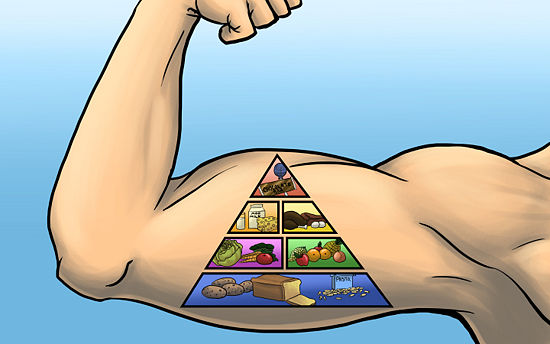We recently had a reader send us a message asking for information about vegetarian diets. She is in the transition phase and was looking for info about how to maintain her diet while making substitutions for meat and animal products. We sent her through some information that related to her specific circumstances and she was grateful for our help and knowledge! Here we’ll share with you some of our brief thoughts and comments on vegetarianism!
Some common complaints from new vegetarians are that they may feel tired or lethargic. This can be common if you are removing meat and/or animal products from your diet and not substituting them properly. When cutting out meat you are losing some extra protein from your diet, as well as some B group vitamins (namely B12), iron, zinc and calcium (from dairy if you choose to cut this out). Proteins, classified as a macronutrient, are needed for tissue repair and lean muscle maintenance. If you aren’t getting it from meats or poultry then you’ll need to substitute with dried beans, whole beans, lentils, peas, nuts, seeds, nut & seed butters (no added fat or oil), and some special fruits and veggies. If you still consume eggs then they are a great source of protein. Protein combining or complementation can come in handy too. The table on this page shows how it works and tries to explain it a little better: http://www.nutrition.org/asn-blog/2011/03/protein-complementation/.
Vitamin B12 is important as it is not found naturally in plants. It’s found in fortified foods and nutritional yeast (from health food shops) and eggs (if you still consume them). Iron is another important one, as a diet lacking in this may result in those tired feelings. It can be found in fortified breads and cereals, pumpkin seeds, beans, almonds, pistachios, chickpeas and mushrooms. It’s very easy to add these foods into your diet if you haven’t done so already. Iron absorption is heightened when you consume iron rich foods with vitamin C. Think orange juice, citrus fruits and bright veggies.
Overall try to include a variety of fresh foods daily to reduce any negative effects like tiredness. Keep your mind open to new foods when browsing the supermarket shelves, like trying out a new grain instead of a staple like rice (try Quinoa or Buckwheat), or trying out a new vegetable. If you’re trying to base your new diet around a guideline, why not stick to the Australian Dietary Guidelines for how many serves of each food group you should be having per day (included is vegetarian substitutes):http://www.eatforhealth.gov.au/sites/default/files/files/the_guidelines/n55a_australian_dietary_guidelines_summary_130530.pdf.
In most cases it can be best to seek advice from a dietitian or nutritionist and have them organise a tailored meal plan for you to follow. They can work with you and your goals/needs to find out exactly what you need to be eating. Finding meal plans online might seem ideal, but they may not be targeted to your goals. For example, some meal plans may be targeted at weight loss instead of meat substitutions. A lot of information from health coaches online may not be reputable either. Information given from food websites may not be accurate as bias may be involved (they might just want you to purchase their products).
However, once you know what foods you should be choosing, there is a great assortment of vegetarian recipes online! Websites such as http://www.veg-soc.org/cms/html/ orhttp://www.vegetarianvictoria.org.au/ may help with basic vegetarian information plus links to some recipes also.
Thanks for reading!









